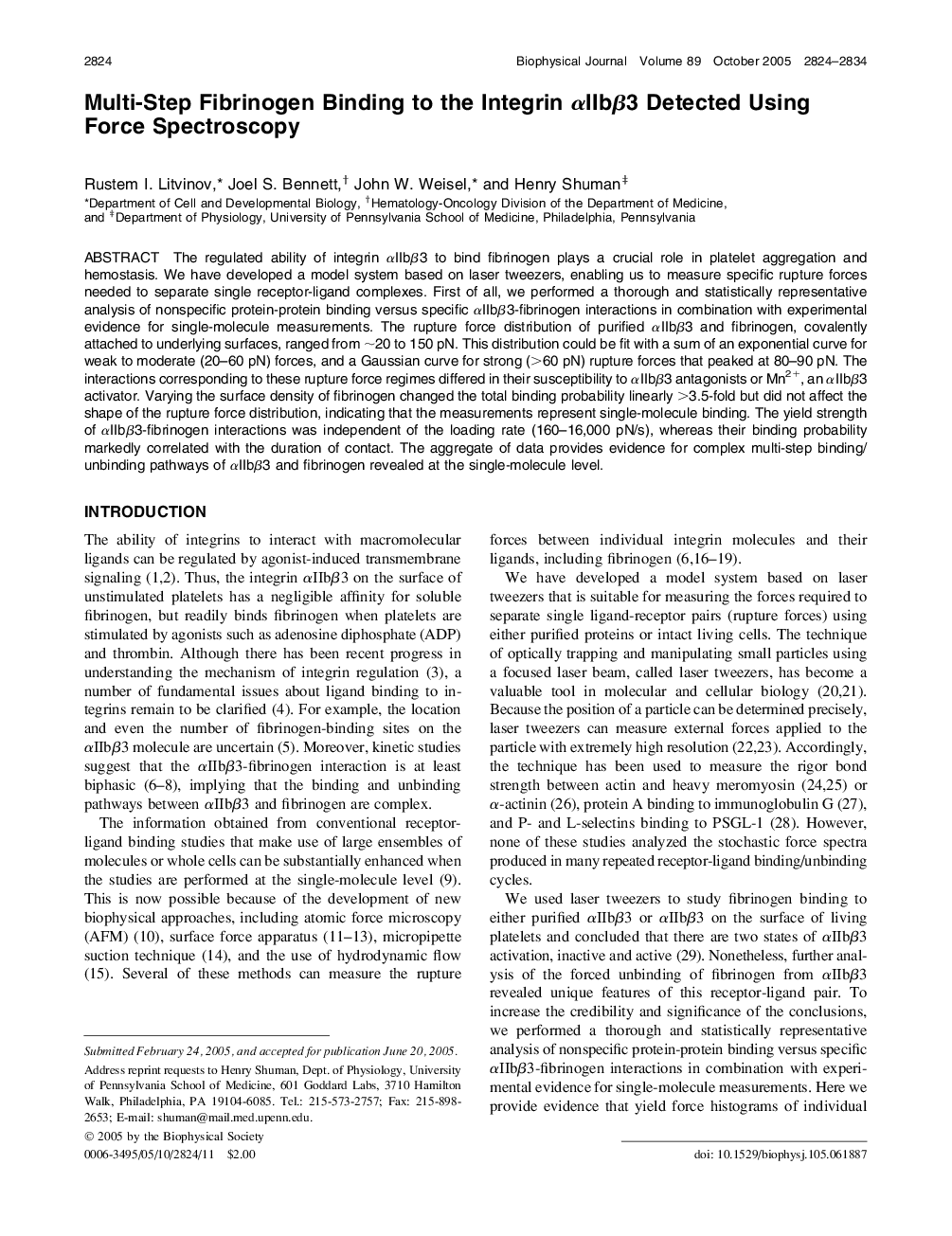| Article ID | Journal | Published Year | Pages | File Type |
|---|---|---|---|---|
| 1959043 | Biophysical Journal | 2005 | 11 Pages |
The regulated ability of integrin αIIbβ3 to bind fibrinogen plays a crucial role in platelet aggregation and hemostasis. We have developed a model system based on laser tweezers, enabling us to measure specific rupture forces needed to separate single receptor-ligand complexes. First of all, we performed a thorough and statistically representative analysis of nonspecific protein-protein binding versus specific αIIbβ3-fibrinogen interactions in combination with experimental evidence for single-molecule measurements. The rupture force distribution of purified αIIbβ3 and fibrinogen, covalently attached to underlying surfaces, ranged from ∼20 to 150 pN. This distribution could be fit with a sum of an exponential curve for weak to moderate (20–60 pN) forces, and a Gaussian curve for strong (>60 pN) rupture forces that peaked at 80–90 pN. The interactions corresponding to these rupture force regimes differed in their susceptibility to αIIbβ3 antagonists or Mn2+, an αIIbβ3 activator. Varying the surface density of fibrinogen changed the total binding probability linearly >3.5-fold but did not affect the shape of the rupture force distribution, indicating that the measurements represent single-molecule binding. The yield strength of αIIbβ3-fibrinogen interactions was independent of the loading rate (160–16,000 pN/s), whereas their binding probability markedly correlated with the duration of contact. The aggregate of data provides evidence for complex multi-step binding/unbinding pathways of αIIbβ3 and fibrinogen revealed at the single-molecule level.
